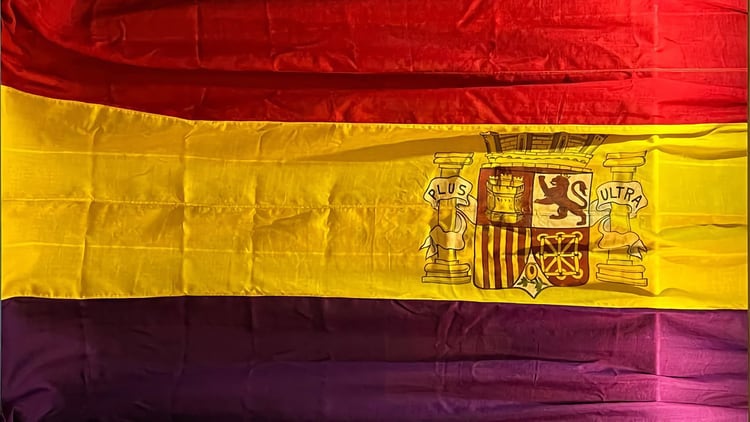The Diplomat
The National Museum of Gibraltar exhibits, from this Friday until Monday 10 April, the original flag of the Second Spanish Republic warship “José Luis Díez”, which took refuge on the Rock in 1938, during the Civil War in our country.
The exhibition of the ensign will take place after the Spanish version of the book ‘Red Ship and Red Tape’ – written by Francis Silva, Luis Miguel Cerdera, Gareth Stockey and Debbie Eade- was presented yesterday in the Association of Municipalities of Algeciras, which tells the story of the ‘José Luis Díez’, a destroyer of the Republican Navy, which, after being hit by the shots of the ships of the national side in the Strait of Gibraltar, had to sail to the British colony. His arrival was not very well received by the military authorities, given the United Kingdom’s policy of “non-intervention” in the conflict, but he did have the support of the Gibraltarian people.
 The Spanish translation of the book, entitled ‘El José Luis Díez en Gibraltar. Perfidious bureaucracy and London’s policy of non-intervention’, was done by Eleanor Hawkins, and at the launch event, the Chief Minister of Gibraltar, Fabian Picardo, reiterated “the importance of this moment in the history of Gibraltarians, of Spaniards in the Campo de Gibraltar and of Spanish Republicans beyond the region”.
The Spanish translation of the book, entitled ‘El José Luis Díez en Gibraltar. Perfidious bureaucracy and London’s policy of non-intervention’, was done by Eleanor Hawkins, and at the launch event, the Chief Minister of Gibraltar, Fabian Picardo, reiterated “the importance of this moment in the history of Gibraltarians, of Spaniards in the Campo de Gibraltar and of Spanish Republicans beyond the region”.
According to Picardo, the display of the ship’s flag in the National Museum, “will give the opportunity to all those interested or involved in this historic incident and to the public to visit and contemplate a crucial piece of material culture that represents the challenges and tribulations of those who suffered such a sad episode”.
The ship was handed over to Franco’s troops after the end of the war in 1939, but Gibraltar kept a plaque commemorating the arrival of the ship and its ensign, which was embroidered during its stay on the Rock by Maria Magdalena Massetti, Picardo’s own grandmother.
According to the book ‘Red Ship and Red Tape’, the flag was offered to the then vice-president of the Spanish government, Alfonso Guerra, but he showed no interest in receiving it, so it was donated to the Gibraltar National Museum.





